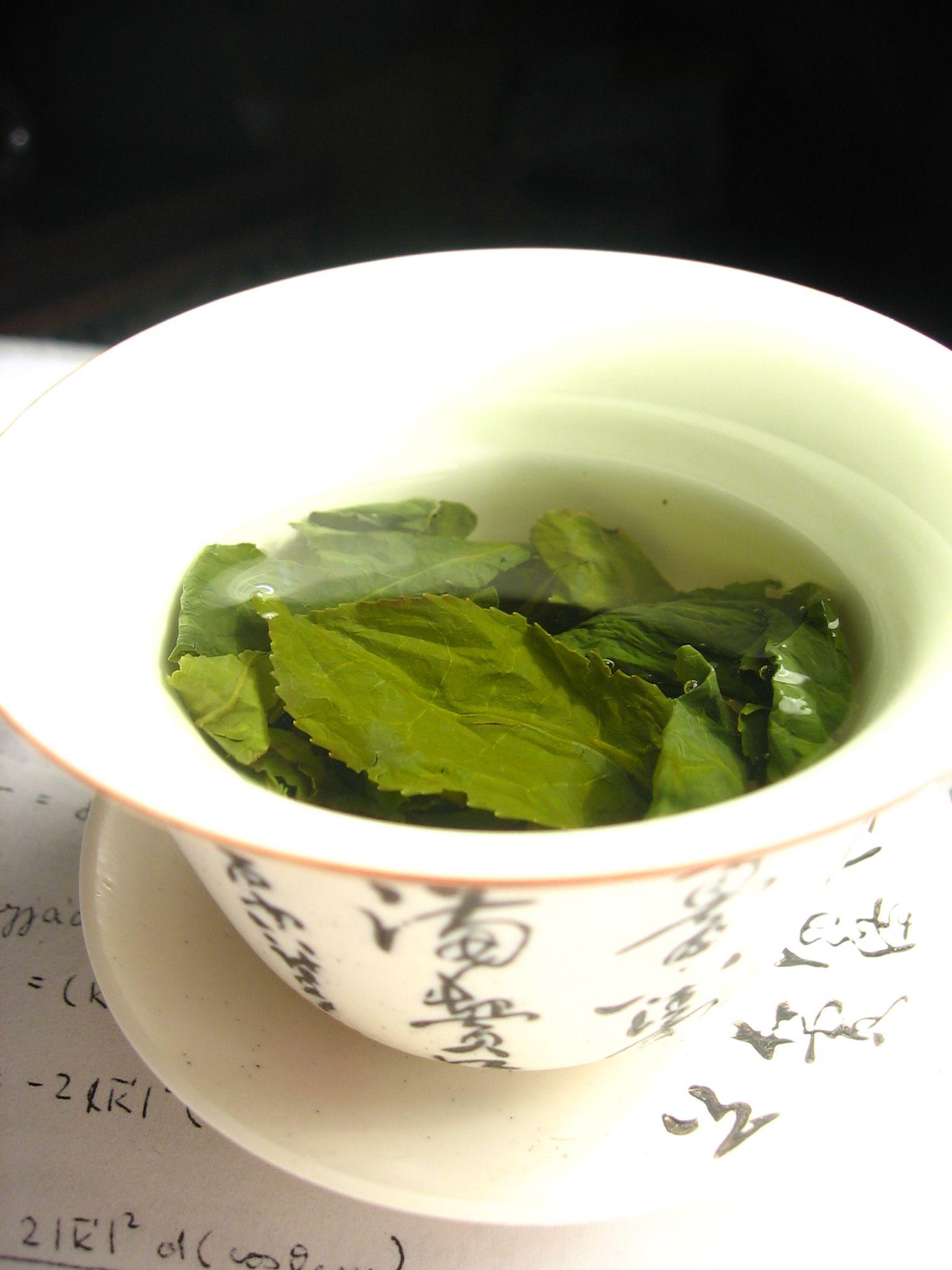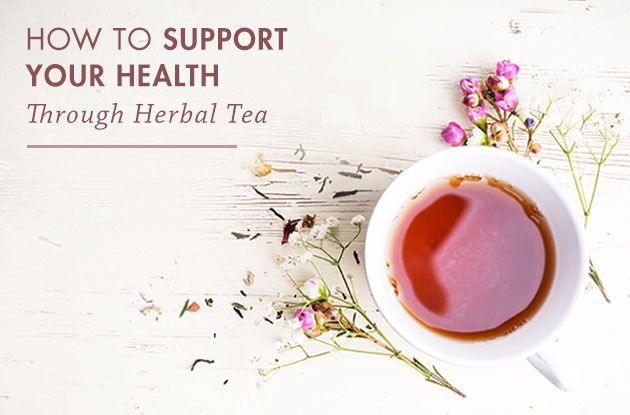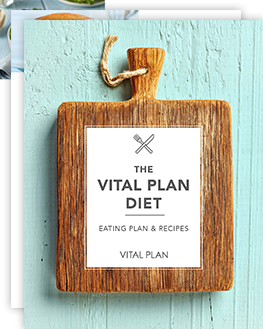One of the many ways to incorporate more herbs into your life is through drinking herbal tea. By brewing fresh or dried herbs and roots, you can unlock the many benefits plants have and, sip by sip, help support your daily health goals.
Tea: More Than Just ‘Sweet’ and ‘Unsweet'
The tea from the Camellia sinensis plant is the most commonly consumed beverage in the world. Green tea, steamed and dried from these fresh leaves, is the most popular way to consume tea in the East. The black tea preferred in the West is a version of this same plant, crushed and allowed to oxidize before drying. The difference may seem subtle, but it releases different chemicals during preparation and changes the flavor completely.
“Tea” is often mistaken for this singular species of plant. Rather, tea is a process in which herbs are prepared. Drying, oxidizing, and steeping are all different depending on the brew.
There are also many other herbs that can be made into tea, and sometimes to better effect. Considering how many plants have beneficial properties and varied flavors, it’s surprising that more people aren’t drinking a larger variety of tea on a daily basis.
The Science Behind the Cup
 We've all seen a tea bag dipped in hot water and watched as color flooded the cup. The stream of brown or green flooding into your mug are actually tannins being leached from the leaves into the water.
We've all seen a tea bag dipped in hot water and watched as color flooded the cup. The stream of brown or green flooding into your mug are actually tannins being leached from the leaves into the water.
Since water is a solvent by nature, it has the power to cause the constituents of the plant to be extracted. Depending on how the leaves have been processed before it ends up in our cup, in any given tea, you can obtain a healthy blend of vitamins, minerals, and essential oils.
It is important to keep all of the constituents of each plant in mind if you are trying to gain a certain benefit from a given plant, as it might change the brewing method. Using a harsh brewing method on a sensitive plant can damage the chemicals you were looking to harness and ruin your tea.
How Tea is Made: Infusions and Decoctions
There are other ways to get beneficial chemicals from leaves into your tea cup. Plants are all different – some are more sensitive than others – so the way you extract beneficial compounds from the leaves may vary. When deciding whether to perform an infusion or a decoction, take a look at the herbs.
Infusions are used to extract vitamins and volatile ingredients from softer, more delicate herbs. Decoctions are used to extract mineral salts and bitter principles from harder materials (roots, bark, seeds and wood).
Hot infusion is the method most people are familiar with, where herbs are allowed to steep in hot water. You can also source and mix your own herbal combinations, using a strainer, to achieve the same result as you would with a tea bag, just with less waste.
Did your grandmother make “sun tea” in the summer? This is a lengthened version of a hot infusion by allowing the sun’s rays to provide the heat to steep your tea. You’re also saving energy without adding extra heat to your home on hot summer days. It’s a fun experiment to try with your kids, too!
The cold infusion method is used mainly for herbs with more delicate properties, such as mint, lemon balm, or chamomile. Simply grab a jar, fill it with water and herbs, and let it sit overnight. Some herbs take longer to infuse with this method, but most only require a day or two. Though you have to wait for it, it is the simplest, most hands-off method for making tea.
Finally, making a decoction is a great way to get the best use out of tougher herbs and barks, like cinnamon bark, sarsaparilla, or dandelion. Place your herbs in a saucepan with a quart of water and simmer for 45 minutes. Feel free to sweeten this mixture once it’s strained.
Which Tea is Best for Me?

Herbal teas can also provide many more outwardly evident benefits; some are stimulating and others have a calming effect. It’s important to take inventory of how you feel before drinking an herbal tea. For instance, if you’re feeling sleepy midday at work and drink chamomile tea for your pick-me-up, that could result in an unplanned nap on the job.
Below are some examples of plants that have different effects that you can use to your benefit:
-
- Holy basil makes a very tasteful tea that can also help you become more resistant to stress. Known as an adaptogenic herb, holy basil helps normalize hormones in the body that have been disrupted by stress.
- Mint and ginger teas are known to support the body in the face of nausea and other digestive ailments.
- Red raspberry leaf tea has been used for centuries to support female reproductive issues and regularity.
- Green and white teas are bursting with antioxidants that help the body cleanse itself.
- Dandelion root tea has been shown to have detoxifying effects and improve liver and kidney function.
- Several plants like echinacea, licorice, clove, and elderflower, just to name a few, have properties that are shown to soothe you during a cold and help support your immune system.
- Lemon balm and chamomile leaves are excellent to add to a brew for winding down at the end of a long day.
A Concert of Herbs Makes a Flavorful Tea
Remember that your tea doesn’t have to be just one herb. You can introduce several of your favorite beneficial herbs to your blend to lighten a bitter taste or add more variety to a too-sweet concoction.
Find herbs that complement each other to achieve a pleasantly flavorful brew. Is ginger just a bit too much for your palate? Ginger and mint are both great for digestive issues and each balance out the other’s strong flavors.
Leaves aren’t the only plant-based component in the vast world of teas. Orange and lemon rinds, pepper, and roots are all parts of certain plants that can be used to flavor your tea. Don’t limit yourself to foliage, but make sure to research the useful parts and effects of every plant before including them into your tea collection.
A Better Way to Hydrate
No matter what mixture you choose, one important component not mentioned yet is that drinking herbal tea helps you hydrate your body in a way that leaves other flavored drinks behind. Most drinks that are marketed as ‘hydrating’ include artificial colors and sweeteners, unneeded salts, corn syrup, sugars, and a bevy of other toxicants that you simply do not want in your body. Herbal tea gives you the opportunity for flavor and hydration without having to sacrifice your health.
A Few Limitations
One limitation of herbal tea, however, is getting enough of the chemical compounds present in the plant to provide substantial benefit. You can get a larger serving of herbs from an herbal supplement. Take this survey to help determine if you’re not sure where to start.
Another problem many people encounter is that certain herbal teas may be too bitter for drinking without sweeteners, even if you complement it with other herbs. My best advice for battling bitterness is to add stevia or other natural, unrefined sweeteners to the mix.
You should also consider that drinking too much tea could lead to problems, as well. A prevalent health issue in Japan is stomach problems related to drinking too much green tea. Also, the tannins present in tea can dry out the skin. As with anything, moderation is key.
In spite of these few limitations, drinking herbal tea can help you find the equilibrium you’re searching for in a healthy, satisfying way. Try a new herbal tea every week and you might just stumble onto a new favorite drink that you can’t wait to share with your friends!



